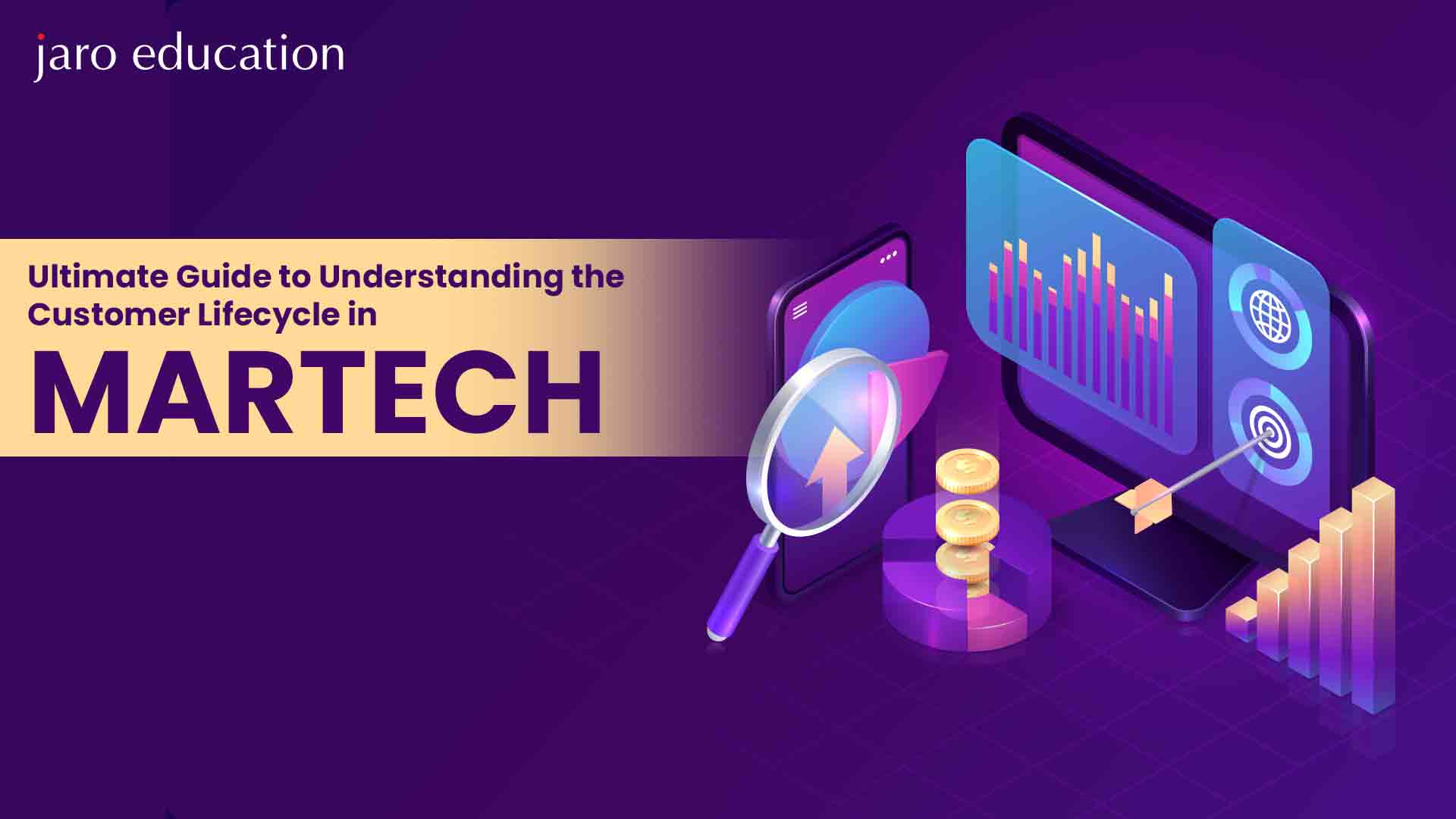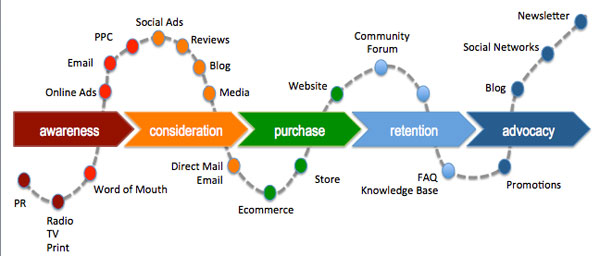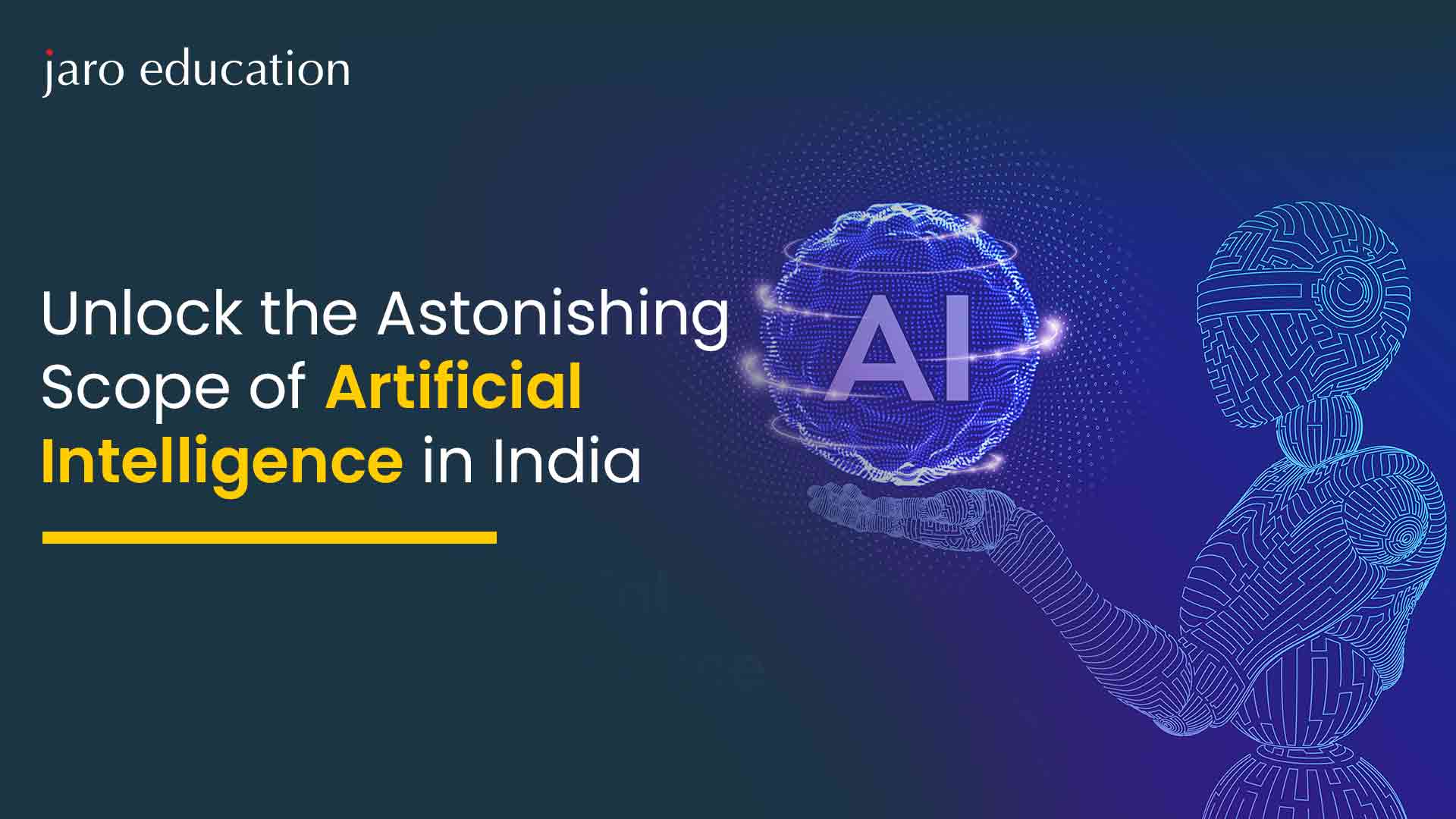Ultimate Guide to Understanding the Customer Lifecycle in MarTech
Table of Contents

- jaro education
- 10, December 2023
- 11:00 am
In today’s digital-first world, mastering the customer lifecycle has become a pivotal aspect of MarTech. MarTech, or marketing technology, refers to the range of software and tools used in digital marketing to optimize and automate marketing processes. It encompasses a broad spectrum of technologies that assist in various aspects of marketing, including customer relationship management (CRM), email marketing, social media management, content management, data analysis, and advertising.
This guide will help you to understand the journey customers take from awareness to loyalty, offering you insights into each phase of their experience. Whether you’re a seasoned marketer or new to the field, this guide will help you to understand each parameter of the customer lifecycle in MarTech and how you can apply it in your marketing strategy.
What is the Customer Life Cycle?
In Marketing Technology, “customer lifecycle” is often referred to delineating the sequential stages a customer traverses while contemplating, acquiring, utilizing, and fostering loyalty to a particular product or service. This concept covers the holistic journey that a customer relies on, not only the initial decision-making phase but also the ongoing relationship maintenance. The steps given below will help you to understand what the customer lifecycle generally looks like
- The customer lifecycle begins with the customer’s consideration of a potential product or service, followed by the pivotal decision-making juncture of making a purchase.
- Post-acquisition, the focus shifts to the practical utilization of the product or service, marking the midpoint of the customer lifecycle.
- The concluding phase involves cultivating and sustaining loyalty, as customers become recurrent patrons, contributing to the longevity and success of the business relationship.
Thus, understanding and optimizing the customer lifecycle is integral to effective CRM strategies, enabling businesses to tailor their approach at each stage, thus fortifying customer satisfaction and loyalty. Customer lifecycle serves as a strategic blueprint for businesses to align their efforts with the dynamic needs and expectations of customers throughout their journey.
Key Stages of the Customer Life Cycle in MarTech
The customer lifecycle is basically a customer purchase journey that starts from awareness and ends with loyalty. Here are five key stages of the customer lifecycle that bring sales to enterprises and generate revenue.

*www.clickz.com
Awareness
At this stage, potential customers first encounter the brand via diverse channels like search engines, social media, online ads, or referrals. The primary objective here is to captivate interest and draw visitors to the brand’s website or app.
Consideration
Customers look at the brand, compare it with others, and decide if they want to buy. The aim is to give them useful info and experiences that make them want to take the next step.
Conversion
This is when potential customers become real customers by buying something or signing up. The focus is on making it easy to buy and offering good deals to encourage them to buy more.
Retention
During this stage, customers persist in utilizing the brand’s products or services, and the brand strives to maintain and strengthen the relationship. Key goals involve improving customer satisfaction, cultivating loyalty and advocacy, and reducing churn. Ongoing support, feedback channels, rewards, recommendations, and fostering a sense of community collectively contribute to this phase.
Advocacy or Loyalty
The ultimate stage is when customers transform into enthusiastic advocates for the brand. They share positive experiences with others, write reviews, and contribute to word-of-mouth promotion. The objective at this stage is to enhance the brand’s popularity through the positive narratives increase shared by satisfied customers.
How MarTech Enhances the Customer Journey?
Modern MarTech is really important for getting customers and maintaining customer satisfaction. For instance, today’s marketers use their MarTech tools to plan campaigns and give personalized shopping experiences. They use various solutions and techniques to make things automatic, find new leads, and turn data into useful insights. In simple words, MarTech helps brands make the whole customer journey better, from the start to the finish.
Here are some techniques and solutions that will help you to understand how MarTech enhances the customer lifecycle.
Marketing Automation
Marketing automation is a fundamental component of MarTech. It helps brands reach customers at different times and figure out what works in their marketing. It also makes sure customers see related products right after they buy something. Automation makes it easy to create special content and improves how brands connect with customers. When done well, it keeps customers happy and builds trust by giving them what they like.
Direct-mail Automation
Traditionally, sending direct mail involved a substantial amount of manual work. With direct mail automation, marketers can streamline many of the tasks that were previously done manually and integrate direct mail campaigns with other marketing activities. A proficient direct mail automation platform expedites the delivery of high-quality content to customers.
It aligns with various marketing channels, creating an impression of thoughtful and attentive brand interaction. Moreover, direct mail automation allows marketers to concentrate on creating content that connects with individual buyers, relieving them of routine logistical tasks.
Content management system
An advanced content management system (CMS) improves each phase of the customer journey, similar to the role of marketing automation tools. CMSs function as central points that marketers utilize for planning, publishing, and modifying content across various channels. They streamline the process of guiding individuals through the marketing funnel and introducing them to new products or services.
When your content is engaging, it gets people curious about your business or product and shows them why it’s what they need. However, it is essential to note that making content experiences better involves more than just creating content.
MarTech Tools for Enhancing Customer Lifecycle
To ensure smooth management of the customer journey in MarTech, it is essential for brands to integrate different tools and technologies. These resources play a crucial role in collecting, analyzing, and applying customer data.
The ultimate objective of any marketing campaign is to convey messages and create experiences that are consistent and meaningful across diverse channels and touchpoints. Now, let’s explore some essential components of a MarTech toolbox that simplify the process of managing the customer journey.
Customer Data Platform (CDP)
Consider this as the central hub for all your customer information. It collects data from various sources such as websites, apps, emails, and social media. It assembles a comprehensive profile for each customer. This enables brands to tailor and personalize their marketing strategies according to customer preferences and actions. According to the G2 report, the top CDP software in the market includes Insider, Klavyo, and Bloomreach.
Marketing Automation Platform (MAP)
The MAP streamlines activities such as handling emails, generating leads, and executing campaigns. Think of it as a marketing assistant that works efficiently and intelligently. Companies leverage it to execute high-quality campaigns based on customer actions. Moreover, they can gauge and refine these campaigns for improved outcomes. HubSpot Market Hub and ActiveCampaign are viable options for fulfilling your marketing automation requirements.
Content Management System (CMS)
This is your go-to tool for creating and sharing content online. It helps brands manage and publish content on websites, apps, blogs, and more. With a CMS, brands can make content that grabs attention, educates customers, and ranks high on search engines. As per Forbes, Wix, WordPress, and Drupal are the best CMS tools.
Social Media Management Platform (SMMP)
This software helps brands keep tabs on what’s happening on platforms like Facebook, Twitter, and Instagram. It’s not just about posting. Brands can listen and respond to what customers say, create eye-catching content, and see how well they are performing on social media. Buffer, SocialPilot, and Zapier can be used for Social media management.
Analytics and Optimization Platform (AOP)
AOP evaluates and analyzes the outcomes of your marketing endeavors. It detects and monitors crucial information, such as the number of visitors to your site and the actual conversion rate of purchases. AOP empowers brands to experiment and enhance their websites, apps, and pages for optimal performance.
By leveraging analytics, marketers can enhance efficiency, strengthen customer relationships, and boost revenue by optimizing specific aspects of the customer journey.
Personalization and Recommendation Platform (PRP)
The PRP utilizes data to customize messages and experiences for individual customers, acting as a personal shopper for each visitor. Brands leverage this technology to enhance customer engagement, loyalty, and sales through the display of personalized content, offers, and recommendations. It’s akin to craft a tailored and exceptional user experience.
These represent just a few of the primary categories of MarTech tools available for brands to manage the customer lifecycle. However, there exists a multitude of additional tools and categories that can complement and augment the MarTech stack, tailored to the specific goals, needs, and budget of each brand.
For instance, certain brands might leverage tools focused on advertising and promotion, with the help of search engine marketing (SEM), display advertising, video advertising, and more, to amplify visibility and extend their reach. Others may opt for tools geared towards content and experience, such as video marketing, podcasting, webinars, and similar platforms, to craft and deliver engaging and educational content that captivates customers. Alternatively, brands might integrate tools specializing in social and relationship management, such as chatbots, messaging apps, online communities, and additional resources, facilitating real-time and on-demand communication to connect with customers effectively.
Further, if you want to learn different MarTech tools and strategies you may consider enrolling in The Executive Programme in MarTech and AI-Driven Marketing – IIM Indore. Designed for individuals seeking to stay ahead in the dynamic marketing landscape, this programme equips participants with practical knowledge to leverage technology and AI, focusing on topics like acquisition, automation, customer lifecycle, and digital transformation strategy.
Conclusion
As we conclude our comprehensive guide to understanding the customer lifecycle in MarTech, we’ve equipped you with the knowledge of its benefits, stages, and integration strategies. Now, the next step is for you to apply this understanding by mapping out the lifecycle for your specific customer segments and effectively managing the relationships you cultivate.
Remember, that the time invested in the initial setup of MarTech within the customer lifecycle holds substantial value. Marketing automation software facilitates streamlined execution of tasks such as configuring email campaigns, monitoring analytics, and planning SEO, thereby enhancing efficiency. This not only saves you time and effort but also brings together smart planning and the power of MarTech. Such integration lays the foundation for a more interconnected, efficient, and prosperous future in marketing.







